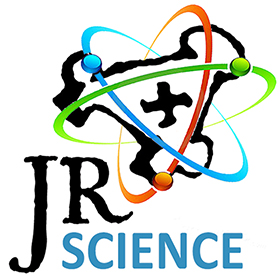 After the Powhatan Indians found a way to wound English soldiers who wore the latest solid metal breastplates, the English turned to old technology to fend off the hostile arrows.
After the Powhatan Indians found a way to wound English soldiers who wore the latest solid metal breastplates, the English turned to old technology to fend off the hostile arrows.
And, with the generous support of The Artist Preservation Group, it is one of those “jack of plates” body armor that Jamestown Rediscovery conservator Dan Gamble is now working on.
“It’s cool because it’s so difficult. It has hundreds of pieces that I have to keep intact as I conserve it,” he said. “It will be very challenging to work on over the next eight months.”
Unlike the one-piece iron breastplate (which the Indians soon learned to avoid in their targeting), a jack of plates provides protection by many small overlapping plates of iron sewn between two layers of fabric. A complete jack would contain over 1,000 plates. This more flexible form of body armor was used as far back as the 14th century.
“They were considered during the 17th century to be somewhat primitive. But here in Virginia they were very effective against arrows,” Gamble said.
The jack of plates is just one of many examples of arms and armor that found renewed purpose in Virginia, according to Bly Straube, Senior Archaeological Curator for the Jamestown Rediscovery Project.
“Because Jamestown was both a business enterprise and a military venture, a significant percentage of the first colonists were ‘well trained and expert soldiers,'” she wrote in the 2007 book about the Archaearium collection. “Arms and armor were essential to the colony, and a wealth of military equipment was found in early fort contexts. These include private arms, which probably belonged to the gentlemen, and military issue weapons for the rank and file soldier. The new conditions of the frontier settlement meant outmoded and archaic weaponry was as useful as up-to-date equipment.”
The complete and still articulated jack came out of the ground in 2005, from a soldier’s pit against the western wall of the fort. Straube said the pit appeared to have been filled during clean-up efforts in the fort in the spring of 1610, making this jack of plates the earliest to have been recovered archaeologically. Gamble said it took several days of dedicated, careful work to remove in one large mass of earth.
“It was very difficult to remove from the ground. We had to completely excavate it, uncover the whole surface, clean it off, and then we coated it with a hardener called Roplex, and also used what we call cheesecloth and covered the whole artifact. Then we were able to undercut it with a metal plate and lift it out,” he said.
X-rays show that some of the small metal plates are more intact than others, so Gamble is now carefully removing dirt from around the jumbled pieces. Traces of the fabric once covering the plates are also being found, and these will be studied for information about the weaves and textiles used to construct the garment, Straube said.
Gamble came to the project in June 2000 and moved into the conservation lab to help process all the artifacts coming from the exploration of the 1663 statehouse site on the western edge of the island. Gamble has been in the lab ever since, working on some of the more than 1.8 million artifacts found in and around the 1607 James Fort site.
“It was a good move. Archaeology is great, but conservation is really important, too. And there are not that many archaeological conservators,” he said. “We can turn a mass of rust back into something like its original appearance.”
related images
- Dan Gamble conserving the jack of plates
- Jack of plates being excavated at Jamestown in 2005
- Jack of plates
- The jack of plates being removed in a block of soil









